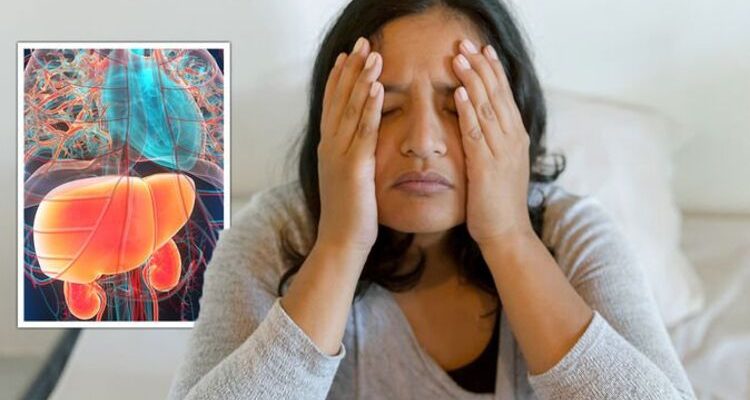This Morning: Alison breaks down over her struggle with obesity
We use your sign-up to provide content in ways you’ve consented to and to improve our understanding of you. This may include adverts from us and 3rd parties based on our understanding. You can unsubscribe at any time. More info
In the earliest stages of non-alcoholic fatty liver disease, when fat is beginning to build up in the liver leading to scar tissue, the British Liver Trust confirmed the “early stage” symptoms. In addition to tiredness, non-alcoholic fatty liver disease (NAFLD) might cause “discomfort in the upper right part of your abdomen”. Be warned, however, that for many people, in the early stages there are no physical indications of the liver cells turning into scarred tissue.
“It is estimated that one in three people in the UK are in the early stages of NAFLD,” the charity stated.
Most people, thankfully, will “never develop serious problems with their liver”, especially if a healthy lifestyle is adopted.
However, stage four of NAFLD, known as cirrhosis, can lead to life-threatening conditions, including cancer.
If you suspect you might have NAFLD, at any stage, it’s important to speak to your doctor.

Stages of NAFLD
- Steatosis
- Non-alcohol related steatohepatitis
- Fibrosis
- Cirrhosis.
Steatosis is when fat starts to build up in the liver, then non-alcohol related steatohepatitis is when the liver becomes inflamed.
By the fibrosis stage, “lasting scars” develop and if cirrhosis develops, the risk of liver failure and liver cancer increases.
Tests for NAFLD might include liver blood tests, an ultrasound, CT scan and/or liver biopsy.

How to reverse NAFLD
To enable the liver the opportunity to heal itself, for most people with NAFLD this means losing weight through healthy eating and more physical activity.
“Even if there is significant damage the liver can repair itself to some degree,” the charity assured.
The key is to shift the energy balance in your body so that you use up more energy (calories) than you consume.
“Excess energy is stored as fat, so your body will start to use its fat stores to make up the difference,” the British Liver Trust elaborated.
If you need support to lose weight, your doctor can give advice or refer you to a weight loss programme or dietitian.
“If you are overweight, losing five to 10 percent of your body weight has been shown to control and in some cases reverse NAFLD,” the British Liver Trust added.
For example, if you weigh 14 stone (89kg), you will need to lose around 10 to 20 pounds (five to 10kg) in total.
To be safe and effective, weight loss should be no more than two pounds per week.

Start with simple swaps to help in your weight loss journey, such as the types of snacks you go for when feeling peckish.
Instead of chocolate and crisps, opt for healthier options such as Greek yoghurt, fruit, or a handful of nuts.
The charity advises “to be realistic” by making one or two changes at a time, until it becomes part of your normal life.
This is when another small, healthy change can be introduced to help you prevent further scarring of the liver.
Source: Read Full Article
